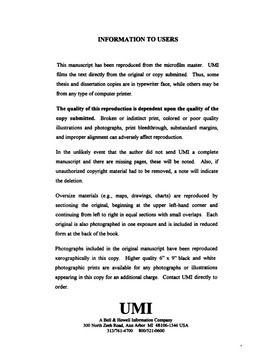| dc.contributor.advisor | Schwagmeyer, P. L., | en_US |
| dc.contributor.author | Voltura, Karen Marie. | en_US |
| dc.date.accessioned | 2013-08-16T12:30:09Z | |
| dc.date.available | 2013-08-16T12:30:09Z | |
| dc.date.issued | 1998 | en_US |
| dc.identifier.uri | https://hdl.handle.net/11244/5689 | |
| dc.description.abstract | Fisher (1930) argued that parents should invest equally in the two sexes. Since then, others have proposed conditions under which parents might be selected to bias their investment in favor of either sons or daughters. I examined brood sex ratios and parental investment patterns in two species of birds: house sparrows, Passer domesticus and cattle egrets, Bubulcus ibis. I found that, at the population level, house sparrows do not vary brood sex ratios over the course of the breeding season but there is heterogeneity among females, indicating that individual females are producing broods with biased sex ratios. It has been suggested that females might bias the sex ratio of offspring in relation to the attractiveness of their mates. Female house sparrows reportedly prefer to mate with males with larger black throat badges and females mated to larger-badged males did produce more sons and females mated to smaller-badged males tended to have more daughters. Larger-badged males also contributed proportionately more to the feeding of nestlings and fledged more of the young that hatched in their nest than smaller-badged males, suggesting that females may gain direct benefits from choosing large-badged males. I also looked for differences in parental investment in sons and daughters during the nestling period by manipulating brood sex ratios. There were no differences in maternal and paternal feeding rates to all-male, all-female, and mixed-sex control nests at any time during the nestling period. Nor were there differences in final weights of nestlings or in nestling growth rates over the course of the experiment. In house sparrows, differential allocation may be expressed in biased brood sex ratios rather than in differential parental investment during the nestling period. Lastly, I looked at sex ratio variation in relation to hatch order in a species with asynchronous hatching, cattle egrets. Cattle egrets exhibit facultative siblicide and I found that females bias the sex ratio of the a-chick (the chick most likely to survive) in favor of sons and that overall sex ratios are male-biased due to this bias and the lack of a corresponding bias towards daughters in the other ranks. | en_US |
| dc.format.extent | xiii, 93 leaves : | en_US |
| dc.subject | Biology, Ecology. | en_US |
| dc.subject | Parental behavior in animals. | en_US |
| dc.subject | Sex ratio. | en_US |
| dc.subject | Cattle egret. | en_US |
| dc.subject | Biology, Zoology. | en_US |
| dc.subject | English sparrow. | en_US |
| dc.title | Parental investment and offspring sex ratios in house sparrows, Passer domesticus and cattle egrets, Bubulcus ibis. | en_US |
| dc.type | Thesis | en_US |
| dc.thesis.degree | Ph.D. | en_US |
| dc.thesis.degreeDiscipline | Department of Biology | en_US |
| dc.note | Adviser: P. L. Schwagmeyer. | en_US |
| dc.note | Source: Dissertation Abstracts International, Volume: 59-09, Section: B, page: 4676. | en_US |
| ou.identifier | (UMI)AAI9905605 | en_US |
| ou.group | College of Arts and Sciences::Department of Biology | |
